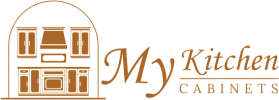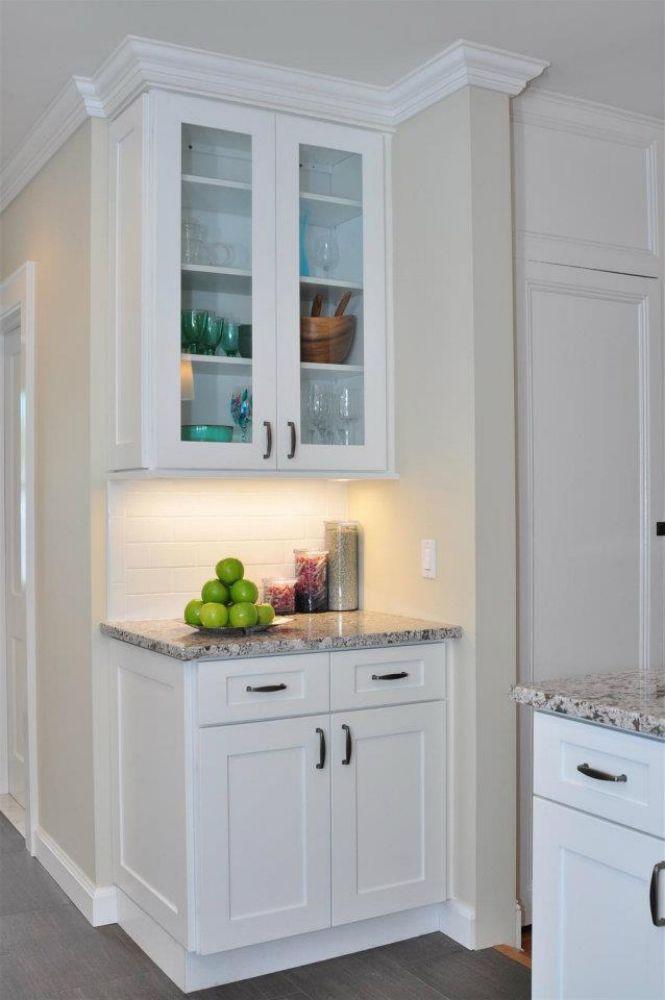Measuring Kitchen Space for Forevermark Cabinets
One of the most important steps in planning a successful kitchen remodel is taking accurate measurements. Without precise dimensions, even the most beautiful cabinetry may not fit properly or function as intended. For homeowners choosing Forevermark Cabinets, measuring correctly ensures that your investment delivers both style and usability. You can learn more about the brand and its offerings at Forevermark Cabinets, available through My Kitchen Cabinets, a trusted source for high-quality and affordable kitchen solutions.
In this article, we’ll provide a detailed guide on how to measure your kitchen space, explain why accuracy matters, highlight tools you’ll need, and discuss how these measurements translate into selecting the right Forevermark cabinets for your remodeling project.
Why Accurate Measurements Are Essential
Every kitchen layout is unique, and precise measurements determine how cabinets will align with walls, appliances, and countertops. Poor measurements can lead to costly mistakes such as gaps, overlapping cabinet doors, or wasted space. With accurate measurements, Forevermark Cabinets can be chosen with confidence, ensuring a seamless fit and a polished kitchen design.
Tools Needed for Measuring
Before you begin, gather the right tools. Measuring your kitchen space does not require advanced equipment, but accuracy is crucial:
-
Measuring Tape (25 ft. recommended): Flexible and long enough to cover large spans.
-
Graph Paper or Design Software: Helps to sketch and record measurements.
-
Pencil and Eraser: For marking and making corrections.
-
Level: To confirm if walls and floors are straight and even.
-
Straightedge or Ruler: Useful when transferring measurements to a sketch.
-
Camera or Smartphone: To document tricky areas or irregularities.
Step One: Sketch the Kitchen Layout
Start by drawing the outline of your kitchen floor plan on graph paper. Represent walls, windows, doors, and major openings. Don’t worry about making it perfect—the goal is to have a working sketch where you can record measurements.
Be sure to include:
-
All walls where cabinets will be installed.
-
Doorways and hall entries.
-
Windows and their dimensions.
-
Existing appliances and plumbing fixtures.
Step Two: Measure Wall Lengths
Using a tape measure, record the full length of each wall from corner to corner. If your kitchen has alcoves, angled walls, or bump-outs, measure those individually. For accuracy:
-
Measure from floor to ceiling.
-
Note if walls lean or bow out by checking with a level.
-
Record each measurement on your sketch immediately.
Forevermark Cabinets are designed in standard widths and heights, so precise wall dimensions help determine how many cabinets will fit along each wall.
Step Three: Mark Doors and Windows
Doors and windows affect cabinet placement, so measure each opening carefully:
-
Record the width and height of every door and window.
-
Measure the distance from the corner of the wall to the edge of the door or window trim.
-
Note the swing of doors (inward or outward) to ensure cabinets won’t obstruct them.
-
Include window sill heights, as they can affect countertop installation.
Step Four: Measure Ceiling Height
Cabinet height options depend on ceiling measurements. Forevermark Cabinets typically come in 30-inch, 36-inch, and sometimes 42-inch wall cabinet heights.
-
Measure the height of the ceiling in multiple places to confirm consistency.
-
Note any soffits or drop-down sections that may limit cabinet height.
This step ensures you choose the correct cabinet height that works with your ceiling dimensions.
Step Five: Locate Plumbing, Electrical, and Venting
Cabinets must be planned around utilities. Take note of the following:
-
Plumbing: Measure the location of sinks, dishwashers, and water lines.
-
Electrical Outlets: Record their positions to avoid obstruction.
-
Vents and Ducts: Mark any air returns or range hoods.
-
Gas Lines: If you have a gas stove, mark the line’s location.
Documenting these elements helps ensure that Forevermark Cabinets are ordered in sizes and styles that accommodate existing mechanical systems.
Step Six: Measure Appliances
Cabinets must be designed around appliances like stoves, refrigerators, and dishwashers. Measure each appliance’s width, depth, and height.
-
Leave clearance space around refrigerators for door swing.
-
Account for countertop overhang near dishwashers.
-
Measure ranges and ovens, noting if they are free-standing or slide-in.
By knowing appliance dimensions, you can choose Forevermark base and wall cabinets that fit seamlessly around them.
Step Seven: Double-Check All Measurements
Accuracy is critical, so double-check every measurement. Even small errors can cause major fitting issues. Measure twice and confirm dimensions match across your sketch.
Translating Measurements into Cabinet Choices
Once you have accurate measurements, you can begin planning which Forevermark Cabinets fit your space. Their catalog includes a variety of standard cabinet widths and heights, making it easy to mix and match units for a tailored design.
-
Base Cabinets: Typically 24 inches deep and 34.5 inches tall (without countertop).
-
Wall Cabinets: Available in heights of 30, 36, or 42 inches, depending on ceiling clearance.
-
Tall Cabinets (Pantries): Usually 84–96 inches tall, perfect for storage.
Matching your wall lengths to these dimensions ensures a cohesive, efficient layout.
Common Mistakes to Avoid When Measuring
Many homeowners make simple errors that lead to poor cabinet fit. Avoid these mistakes:
-
Forgetting to measure trim or molding.
-
Overlooking wall irregularities such as bowed surfaces.
-
Ignoring door swings and appliance clearance.
-
Relying on rough estimates instead of exact measurements.
Avoiding these pitfalls ensures that Forevermark Cabinets are installed without costly adjustments.
Professional Measuring Services
While DIY measuring is possible, many homeowners choose professional services to ensure accuracy. Retailers like My Kitchen Cabinets often offer measurement assistance, reducing the risk of mistakes and streamlining the ordering process.
Comparing Forevermark Measuring Needs with Other Brands
Measuring for Forevermark is similar to measuring for other brands, but because Forevermark offers both RTA and pre-assembled options, it’s especially important to ensure dimensions are exact. RTA cabinets leave little room for modification once assembled, so accuracy from the start is essential.
Planning Layout Options
Once measurements are complete, you can experiment with layouts such as:
-
L-Shaped Kitchens: Maximize corner storage.
-
U-Shaped Kitchens: Provide ample counter and cabinet space.
-
Galley Kitchens: Ideal for smaller homes with parallel cabinet walls.
-
Island Layouts: Add extra storage and work surface.
Forevermark’s versatile cabinet designs work with all these layouts, but the right fit depends on precise measurements.
How Measurements Impact Budget
Accurate measurements also help homeowners budget effectively. Knowing the exact number and size of cabinets prevents over-ordering or underestimating. Forevermark Cabinets are known for affordability, but careful planning ensures you maximize your value without wasted expense.
Conclusion: Accurate Measurements Guarantee Perfect Forevermark Cabinets
Measuring your kitchen space is the foundation of a successful remodel. With Forevermark Cabinets, precision ensures that the cabinets you order will fit seamlessly into your layout, align with appliances, and maximize both beauty and functionality.
By following this step-by-step process—sketching the layout, measuring walls, doors, windows, ceilings, and utilities, and double-checking everything—you set the stage for a smooth installation and a stunning finished kitchen.
Whether you choose to measure yourself or hire professionals, taking the time to get it right ensures that your investment in Forevermark pays off for years to come.
FAQs about Measuring for Forevermark Cabinets
1. What’s the first step in measuring for Forevermark Cabinets?
Start by sketching your kitchen layout on graph paper. This provides a base for recording wall lengths, openings, and appliance placements.
2. How do ceiling heights affect cabinet choices?
Ceiling height determines whether you can install 30-inch, 36-inch, or 42-inch Forevermark wall cabinets. Taller ceilings allow for more storage space.
3. Do I need to measure appliances separately?
Yes, measure the width, height, and depth of all appliances. This ensures cabinets are planned around them with adequate clearance.
4. Can I measure my kitchen without professional help?
Yes, most homeowners can measure with a tape measure, graph paper, and patience. However, professional measuring services are recommended for maximum accuracy.
5. What happens if my measurements are off?
Incorrect measurements can lead to gaps, misaligned cabinets, or wasted space. This is why double-checking dimensions or hiring a professional is strongly advised.
Read: Are financing options available for purchasing Forevermark Cabinets?
Read: Can Forevermark Cabinets be used in bathroom or laundry room projects?

